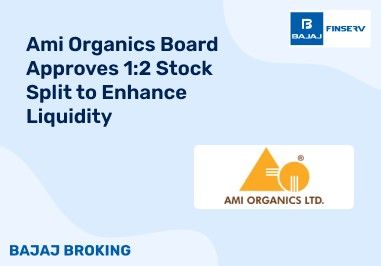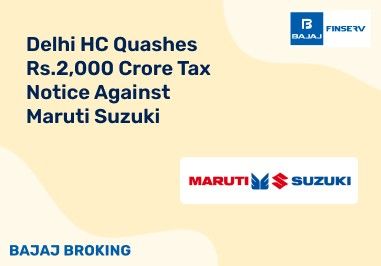Introduction to the Indian Stock Market
There is no doubt that Indian stock market trading has become extremely popular in the past few years as a means of generating additional income. India is one of the fastest growing economies in the world and as a result of this, the investment options on the stock market are endless for both domestic and foreign traders. The stock market is a platform that forms a bridge between traders looking to sell various financial instruments and buyers looking to invest in them.
The Indian stock market consists of two stock exchanges where most of the trading happens. These include (a) the Bombay Stock Exchange or BSE and (b) the National Stock Exchange or NSE. Both of these exchanges operate during the same hours and have the same process for closing deals as well. Both the stock exchanges operate according to the regulations and monitoring done by SEBI or the Securities and Exchange Board of India.
Major Types of Trading
To make the best profit, traders use different strategies. However, certain strategies that might work for one trader might not work for another. This is why traders must be aware of all the major types of trading in the stock market and adjust their approach in alignment with their financial goals. Some of the major types of stock market trading include:
Cash Trading
- Cash trading is a conventional method of trading in the stock market
- Under cash trading, shares are sold or bought for cash.
- When investors indulge in cash trading, they have the benefit of holding onto a stock for as long as they want
- Once the stock reaches the profit that the investors desire, they can decide to sell it
- Traders are expected to pay the full amount of the stocks in cash which helps traders from overindulging
- It is one of the best trading strategies that new traders can use as it is hassle-free and does not require a lot of experience to get started.
- Cash trading also has a low-risk factor
Intraday Trading
- Of the many stock market trading strategies, intraday trading is the most common one.
- Intraday Trading can offer higher-than-average profits but it is also the riskiest trade type when compared to others.
- Intraday trading happens in a single trade day meaning that stocks are bought and sold on the same day.
- As traders are closing deals on the same day, transactional charges on their Demat account do not apply.
- Intraday traders look at all the aspects of the stocks including their price movements to zero in on the trades they want to invest in.
- Traders either buy first and sell later in the day or vice versa.
Delivery Trading
- This is another traditional method of investing using which traders can make significant profits.
- In delivery trading, traders purchase company shares to hold them over an extended amount of time.
- This time frame can extend anywhere from weeks to even years.
- As a part of delivery trading, sellers need to transfer their shares from their demat account to the buyer’s demat account.
- Traders cannot buy and sell shares in one day.
- Investors have better control over the purchased stock in delivery trading.
- Delivery Trading offers long-term benefits as over the holding period of the stocks, a company can likely experience appreciation.
Additional Read: Top Traders in India
Margin Trading
- Involves a trader borrowing funds from a stockbroker to buy shares or stocks.
- This helps investors purchase more than their current funds will let them permit.
- Helps investors take a larger position.
- Margin trading also helps traders have access to the potential for higher returns.
- This trading method is a great way to generate profits short-term.
- The broker, who has lent the inventor funds, charges a nominal interest, annually on the amount loaned.
- Investors can either use cash or the securities in their demat account as leverage for margin trading.
- While the chances of higher returns exist, so the chances of potentially greater losses do too.
Derivatives Trading
- Derivatives can be defined as a financial contract between two or more parties.
- The derivative, as a security, gets its value from an underlying asset or group of assets. These assets are determined by the parties involved in the contract.
- As a part of derivative trading, investors can buy or sell an asset for a future period.
- Derivative contracts come with a fixed expiry date.
- It is better to invest in a derivative contract than buying the underlying asset as the gains in such a contract have the potential to be greater.
- It is a leverage form of trading where investors can buy several underlying assets by paying a small amount.
Futures Trading
- Futures are a type of derivative contract that derive their value from the underlying assets.
- In future trading, assets are sold or purchased on a future date at a predetermined price.
- Assets such as gold, silver, shares of a company or even a commodity can be a part of the underlying group of assets in a futures trading.
- The buyer in a futures contract is known to have the long position while the seller is known to have the short position.
- A future contract’s value changes based on the price of the underlying assets.
- Both the buyer and seller are under the obligation to honour the contract.
Options Trading
- Options are another type of derivative contract.
- There are two types of option trading.
- The call option gives the right to an investor to buy an asset at a particular price before its expiry, without having the obligation to do so.
- The put option gives the investor the right to sell an asset at a fixed price before the expiry of the asset without the obligation to do so.
- Options are an affordable way to invest in the market as they have great leveraging power.
- There are chances of higher returns as investors can profit from both the upward and downward movement of the market.
Arbitrage Trading
- Arbitrage trading is a very quick way of trading.
- Investors who deal in arbitrage trading simultaneously buy and sell securities on different exchanges.
- This helps them earn greater profits because of the price differentials.
- This price differential, however, is mostly short-lived and usually does not last for more than a few minutes or seconds.
- The same asset needs to trade at different prices across different exchanges to carry out an arbitrage trade.
- Since the price differential window is short-lived, the sooner trades are done simultaneously, the better the chances of generating profits.
- SEBI does not allow arbitrage trading on the same day, so traders will have to sell stocks in their demat account on one exchange and buy the same the next day from a different exchange.
Swing Trading
- In swing trading traders invest in stocks that will help yield a profit over a few days or weeks.
- Traders can determine which stocks to invest in by observing stock price patterns.
- This helps them determine when the price of the stocks might go up to buy low and when the price will go down so they can sell high.
- This analysis can be done by observing charts and past price movements of the stocks.
- Traders can incur losses as well when the price of the asset goes the wrong way.
- Swing trading takes practice to trade successfully and make profits.
Positional Trading
- In positional trading, traders can hold their positions for an extended period.
- This period can extend anywhere from weeks to even years.
- Positional trading focuses on capitalising on long-term trends in the market and not on short-term fluctuations.
- Traders can hold onto their shares and choose to sell them when the shares’ prices are high to generate significant profits.
- Since positional traders usually indulge in fewer trades, they also incur less transactional costs.
- Positional trading offers more flexibility in terms of schedule to a trader.
- Since the impact of short-term fluctuations in the market does not impact the shares in positional trading, it is a less risky method of trading.
Algorithmic Trading
- Algorithmic trading uses computers to place a trade to generate profits.
- These computers are specially programmed to follow instructions to place trades fast and frequently which humans cannot do on their own.
- There is a defined set of rules that needs to be followed in algorithmic trading.
- These rules are based on price, timing, quantity etc.
- Algorithmic trading rules out potential emotional impacts that might affect trades, thus making trading more systematic.
- Algorithmic trading also makes the market more liquid.
- Trade orders are placed accurately and instantly.
- Automated checks on market conditions are also done simultaneously.
Commodity Trading
- Commodity trading helps with risk management for stakeholders.
- Such stakeholders include end-users like farmers, producers, etc.
- In India, institutional as well as retail investors are also attracted to invest in commodity trading.
- A majority of the portion of commodity trading includes agricultural commodities.
- Other than agricultural commodities, commodity trading can also include metal and energy commodities.
- There are three commodity exchanges in India:
a. Multi Commodity Exchange of India Ltd or MCX - Specifically for energy and metal commodities.
b. National Commodity and Derivative Exchange or NCDEX - For agricultural commodities.
c. Indian Commodity Exchange or ICEX - A variety of commodities can be traded here.
Currency Trading
- Currency trading is the main aspect of global financial markets.
- As the name suggests, currency trading is a type of trading where one currency is exchanged for another.
- Forex or the foreign exchange market is the main platform where currency trading is carried out.
- The main purpose of currency trading is to make profits out of the fluctuations in the exchange rates of the currencies being exchanged.
- Currency trading is highly liquid since Forex itself is one of the most liquid markets across the globe.
- Forex is accessible to traders 24 hours, 5 days a week so traders across different time zones do not have accessibility issues.
How to Pick the Right Trade for You
Choosing the right type of trade depends on various factors, including your financial goals, risk tolerance, and the amount of time you can dedicate to trading. Here are some tips to help you decide:
- Assess Your Risk Tolerance: Understand how much risk you are willing to take. For example, intraday and margin trading are high-risk but can yield quick returns, whereas delivery and positional trading are lower-risk with long-term benefits.
- Define Your Financial Goals: Are you looking for quick profits or long-term growth? Short-term traders may prefer intraday or swing trading, while long-term investors might opt for delivery or positional trading.
- Consider Your Time Commitment: Some trading types, like intraday trading, require constant monitoring of the market, while others, like positional trading, allow more flexibility.
- Do Your Research: Before diving into a particular type of trading, ensure you understand its nuances, including potential risks and rewards.
Conclusion
India’s stock market offers many trading types for investors and traders, with different preferences, to choose from. With comparatively faster-paced trading like intraday trading to a more laid-back approach of positional trading, there is something for every kind of trader. However, before traders decide to start their trading journey with a new type of trading, they must do their research to reduce any potential risks.
Disclaimer: Investments in the securities market are subject to market risk, read all related documents carefully before investing.
This content is for educational purposes only. Securities quoted are exemplary and not recommendatory.
For All Disclaimers Click Here: https://bit.ly/3Tcsfuc













